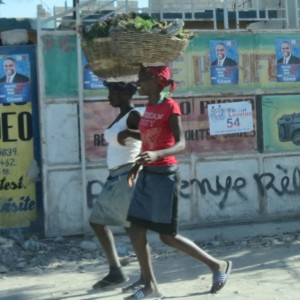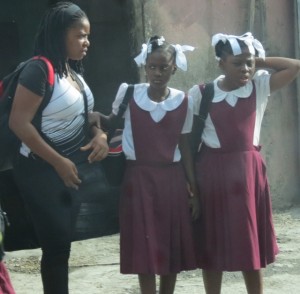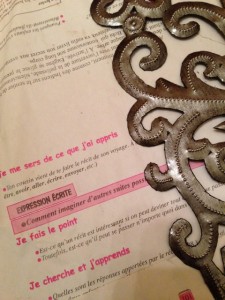In the News: Haitian Presidential Elections

Despite political uncertainties, life goes on in Port-au-Prince
A couple of months ago, I wrote about Haiti’s presidential elections, saying among other things that the top two vote-getters in the primary elections, Jude Celestin and Jovenel Moise, would be participating in run-off elections to be held on Dec. 27th. This is not quite the way it’s worked out. To be blunt, it has become quite a mess, but I will try to give it to you here in a nutshell…
Jude Celestin, the candidate with the second-most votes, has charged that the Oct. primary elections were fraudlent and declared that he would not participate in any run-off unless his conditions were met. All six pages of them. Among his complaints is that the membership of the CEP – Haiti’s version of our Electoral College – is selected in dubious fashion and thereby has no credibility in decision-making for either the primary or the run-off elections. A government-appointed investigative commission looked into Celestin’s fradulency claims and it too discredited the elections, citing a sky-high number of voting “irregularities” and presumption of fraud. The Commission echoed Celestin’s call for sweeping changes in the electoral machinery to include the CEP.
Yet another group, called the G-8 and composed of several presidential candidates from primary race that didn’t qualify for the run-offs, publicly bashed the Commission’s findings. G-8 says that while the Commission verified voting irregularities, it did not identify the beneficiary of those irregularities. In other words, the losing candidates are questioning whether or not they actually lost. Good point. Are you confused yet? Wait, there’s more!
The December 27th run-off election date was postponed so that these investigations could be carried out. Two weeks ago, a January 24th run-off date was put forward by the (possibly slimy) members of the CEP. Outside observers are now pressuring the Haitian government to go through with the elections on that date with or without Celestin. The problem there is that Jovenel Moise, the government-backed candidate, might be the only one running. If no president is elected and installed, “in peaceful transfer of power,” by February 7th, it will become necessary for a provisional government to be formed in accordance with Haitian constitutional law. That’s what has the outside observers worried, of course.
Not surprisingly, Haitians are taking to the streets en masse in protest. The Associated Press interviewed one of the protesters, Ernest Casseus, an unemployed 57-year-old from a neighborhood of concrete shacks and trash-strewn streets. Casseus insisted that the runoff should be postponed to protect democracy in Haiti, saying rather succinctly, “It’s like a football game: You need two teams to play or you have no finals. A presidential election with one candidate is crazy and will only result in chaos,”
Stay tuned.
Contributed by Linda for It’s Cactus



